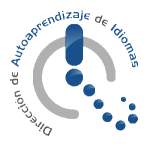

Music and Storytelling in the EFL Classroom
Roberta King, Mexico
Roberta King has been living and working in Hidalgo since 2001. After nearly 30 years in the business world, she decided to pursue teaching English as a second language when she finished her B.A. in English in 1999. Roberta received a TESOL certificate from the Houston-based International TESOL College in 2000 and left a lucrative post in the business world to fulfill a dream to teach in Mexico. Since then, she has received an MBA and Bachelor’s and Master’s degrees in TESOL. Roberta works at Hidalgo State University (UAEH) in the Language Self-Learning Centre.
E-mail: ttrking@hotmail.com
Menu
Compelling arguments
Storytelling for students of all ages
Freedom of expression
Music, dance and storytelling are some of the most ancient forms of communication.
In the distant past, our ancestors used rhythms, songs, dance and costumes to tell the story of creation or stories of successful hunting expeditions as they sat around the fire. From time immemorial, mothers have sung to their babies to calm them down or to get them to sleep and have told their children stories to teach them about life.
Long before the written word, traditions, myths and legends were passed down orally from generation to generation. Our earliest literature including the Bible comes from writing down these tales that storytellers took from place to place. Even today, this tradition lives on through professional storytellers who enthral us with their performances.
Doesn’t it follow that we can use music and storytelling as tools to teach a second language?
From my daily interaction with students from all walks of life, I have found a general agreement among them that speaking and listening are the most difficult skills in a second language. Whether it is because they are afraid to make mistakes or are paralysed with not knowing which tense they must use or any other of numerous fears, I cannot say. However, it is my sincere belief that as teachers we need to create an environment where our students feel safe, where they do not worry about mistakes, but only want to communicate. Remember, language is communication and as long as we can understand and be understood, we are communicating. We do not have to be perfect, as anyone who has heard my Spanish can attest! We can help our students overcome their fears through music and storytelling.
There are an increasing number of studies to prove the value of using music and storytelling in the classroom by providing students with a richer learning environment to encourage them to learn and participate. We know that the more students participate and the more meaningful their learning experience is, the more they retain cognitively and the more they retain with understanding, the more they can use their knowledge meta-cognitively – applying their knowledge to real life situations.
In UAEH’s Modelo Educativo, as teachers we must provide an environment that encourages student participation in ways that will help them develop competences – another way of saying being able to use the knowledge they have learned meta-cognitively.
Studies have shown that music is a powerful mood-enhancer and is processed in many of the same parts of the brain as language. As babies, we often sing before we can speak. Some people with damage to the speech centers of their brains use song to communicate because spoken words fail them. This shows a definite correlation between music and communication.
Storytelling can be used to encourage students to speak in a natural way. After all, when we have conversations, we relate our personal stories to each other. If we were lucky as children, we had relatives who told us stories about our family members and gave us our family history. All of this is storytelling. All of our students have stories to tell. We just have to encourage them and give them their space in which to tell them.
What compelling arguments for using music and storytelling in the classroom!
We can use music and chants as warmers or warm ups with students of all ages.
Music can be used as Karaoke to help students improve their pronunciation and fluency. Even though the lyrics of songs undergo transformations and aren’t always pronounced or ordered in the way we use spoken language, they are very helpful in reducing students’ resistance to using the language. Because songs are often poetry, we can also study the meaning, research the story behind the lyrics and encourage students to speak about what the song means to them or how it makes them feel
During class, I use background music to encourage students to think and learn while performing different tasks in English. Of course, the background music is always instrumental and usually classical, such as Mozart, Vivaldi or Handel. Studies have found that listening to baroque and classical music while studying, helps students to retain what they studied. Luz Maria Ibarra creator of the Brain Gym concept has several series of CDs. I frequently use tracks from Gimnasia Cerebral 1 as they were specifically created for classroom use and have all the components necessary to assist student learning. Background music can also be used as a non-verbal way of dividing class time into various segments by turning the music off when focusing on speaking and whole class work and turning the music on when students are working on individual or group activities. Remember, this is background music and needs to be played very quietly. As a suggestion, use instrumental rather than vocal music because the students do not focus on the music.
Another activity I like to do is playing music while my students use blank paper with coloured pencils or markers and their imaginations to create pictures that express what the music tells them. When they explain their drawings, they are using a form of storytelling.
So, in my opinion, we can combine music and storytelling to complement each other.
Just as we encourage our students to use their imaginations, we must use our imaginations, too, and create lessons that incorporate whatever it takes to impress our students favourably to encourage them to learn.
Storytelling can be used for listening activities where we read a short story or use a recording of a short story to engage our students. We cannot just read in a monotone voice. We have to breathe life into the characters as well as ask questions while we’re reading to ensure our students retain their interest. We also need to prepare interesting and meaningful activities involving all four skills. These can include changing the story to a role-play, having students read the story aloud or anything else you can think of that promotes interactive work.
In a humanistic, communicative classroom, it is imperative for students to tell their own stories. Getting our students to tell their own stories is also great for practicing listening and speaking. Therefore, you can ask them to make up their own stories about whatever subject you are studying in class or whatever subject they want and get them to tell them, read them or perform them. Traditional oral storytelling involves knowing a story and being able to tell it without using a book. Perhaps students have favourite stories from their childhood that they can tell to the class in English. To encourage their imaginations, they can create visuals to accompany their stories.
What is the purpose of using music and storytelling in the class, you might ask?
When handled in a non-threatening way, music and storytelling use interesting and fun activities that allow students a freedom of expression that can be difficult to obtain in other circumstances. So many times students are stressed when they have to speak in English that being able to sing or tell a familiar story is relaxing and can help them with pronunciation and fluency. These are also activities that our ancestors performed around campfires long ago and are intrinsic to human behaviour. By integrating these primal art forms into our classes, we provide our students with meaningful communication in a second language that is inherent and therefore reassuring.
I hope that now you have more insight into the reasons for using these fun activities in your second language classrooms, you decide to make the most of music and storytelling in your lesson plans.

Please check the How the Motivate Your Students course at Pilgrims website.
Please check the Teaching through Music and Visual Art course at Pilgrims website.


|